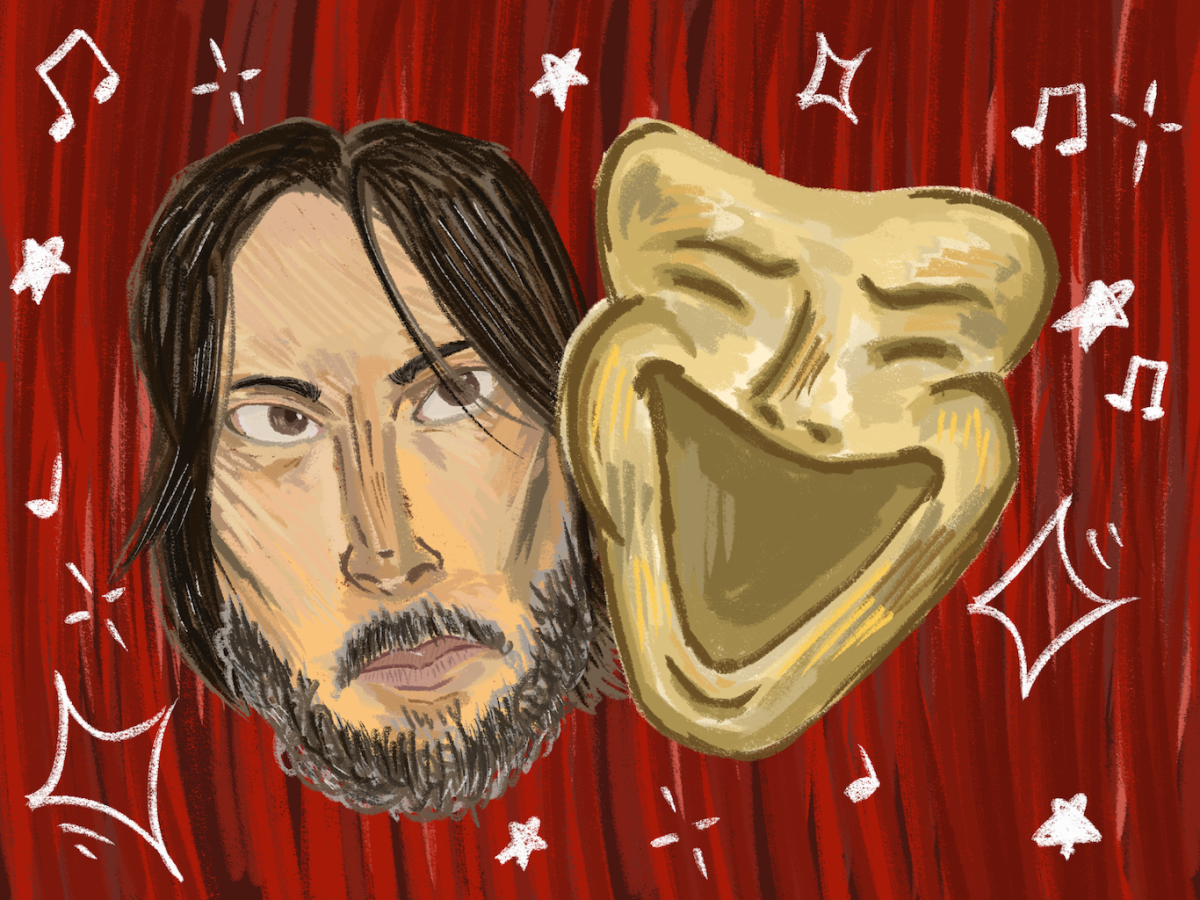“Halloween” (1978)
Ryan Mikel, Arts Editor
I don’t care what anybody says: John Carpenter’s original “Halloween” is the best horror film of all time. It not only reimagined a mostly Hitchcock-dominated genre, but it also introduced the teenage slasher genre to the world, along with the “final girl” trope that inspired the likes of Wes Craven (“A Nightmare on Elm Street,” “Scream”), Sean S. Cunningham (“Friday the 13th”) and Ridley Scott (“Alien”). “Halloween” isn’t just artfully crafted –– John Krasinski (“A Quiet Place”) and Jordan Peele (“Get Out”) obviously took influence from its pacing, camerawork and minimal gore –– but it is also terrifying. For those who have not witnessed the classic, the story follows masked serial killer Michael Myers (Nick Castle) and his return home after escaping a sanitarium. He was institutionalized fifteen years earlier for murdering his older sister Judith. This time, his target is baby sister Laurie Strode, played by Jamie Lee Curtis in her debut role. To this day, I hold an irrational fear that one day, Myers will strangle me to death when I get in my car or impale me with a chef’s knife while I’m retrieving a midnight snack. The deaths in “Halloween” are the kind that mess you up for life because of their reality. I don’t understand how films about paranormal presences or mythical monsters scare people more than true crime. What happens to the babysitters on Halloween night in this film is macabre and completely plausible. What makes “Halloween” so gripping is that it could actually happen to any of us. Nobody plans to get murdered.
“Halloween II” (1981)
Ryan Mikel, Arts Editor
I don’t care what anybody says: “Halloween II” is the second best horror film of all time. Picking up directly where its predecessor left off, this film is what fuels my darkest nightmares. If you have a phobia of hospitals, I highly recommend you sit this one out. As predicted, Myers is not captured at the end of the first “Halloween,” but his sister Laurie does escape and is transported to a local hospital where round two takes place. The kills in this film get even more creative, with the audience witnessing ten times the stabbing and strangling, a nurse drowned in a hydrotherapy tub and Laurie chased down multiple hallways and flights of stairs while crawling and attached to an IV. If you’re looking for a Halloween double feature, pairing “Halloween” with its sequel is a highly enjoyable, nausea-inducing viewing experience. Screenwriters Carpenter and Debra Hill knew how to get under America’s skin and stay there by elevating the suburban folktale of the babysitter killer to new heights with a badass theme song, a central heroine that transcends numerous sequels and a killer that traumatized me as a child.
“Terrifier” (2018)
Nicole Rosenthal, Music Editor
While visiting one of my best friends from high school at the University of New Hampshire, we decided to cozy up to a Netflix B movie, reminiscent of our earlier days spent perusing the back catalog of the horror category. As we scrolled past the classic “Halloween” and “Chucky” franchises, a new film caught our eye: “Terrifier.” Our attention was divided for the first few minutes of the film because of the conventional damsel-in-distress-with-a-flat-tire nature. But our eyes eventually became fixated on a shocking, forthcoming action. To our amazement, the eye roll-worthy tropes were –– excuse my pun –– slashed. The bad acting from the protagonists was laughable, yet, the laughter became refreshing after the unrelentless gore manifested on screen.
Art the Clown, the antagonist and MVP of the film, is the only great actor in “Terrifier,” which only highlights how terrifying he truly is. Stalking, taunting and eventually slashing his prey through a variety of disturbing methods, he has the creative discipline of John Kramer from “Saw” with the stealth of Samara from “The Ring.” Perhaps the most terrifying factor of “Terrifier” is that the antagonist is so unafraid of being caught. Art follows two women into a pizza parlor at the film’s beginning, making his presence known to the public. He doesn’t even attempt to conceal his identity. It’s Halloween night, so everyone is allowed to dress like a demonic clown, right? He sits across from our two protagonists with a gut-wrenchingly evil smile sprawled across his painted face, and needless to say, my friend and I ended up sleeping with the lights on that night.
“Train to Busan” (2016)
Guru Ramanathan, Film & TV Editor
Zombies have been the rage forever, and with “The Walking Dead” and “World War Z,” they have enjoyed an egregious amount of popularity in the past decade. But the genre has also grown aggressively stale, putting more emphasis on mindless zombie action that we’ve already seen before as opposed to strong characters battling novel ways to kill lively corpses. A recent genre film that broke out is the Korean action thriller “Train to Busan,” directed by Yeon Sang-ho. The film follows a narcissistic father who is taking his daughter to see his divorced wife, but while on the titular train a zombie apocalypse breaks out. While “Busan” is seemingly just another generic product in the crop of zombie movies, it places a surprising amount of effort to develop its main characters. It actually builds an incredible ensemble that we can care about to fend off the zombies. The performances are endearing, especially that of Gong Yoo and Kim Su-an, who play father and daughter, respectively and help to carry the film through each of its bombastic action sequences. The movie takes a page out of “World War Z” and makes the zombies astoundingly fast and strong, but Sang-ho finds interesting ways to make them vulnerable. The film also crams its characters into a deadly, contained space, crafting ingenious ways for them to navigate the apocalypse. But at the end of it, this film is about a redemption story for a neglectful father — although this idea is not novel, the way in which it is integrated into the zombie genre is very well written and action-filled, making this a zombie film that delivers on every level.
“Yavarum Nalam” (2009)
Guru Ramanathan, Film & TV Editor
The haunted house movie is a subgenre that is probably not talked about enough, but how often can this trope be twisted to produce something intriguing and terrifying every time? Ghost takes over house and then paint starts peeling, doors close suddenly and pans flip over. But Vikram Kumar’s Tamil horror film “Yavarum Nalam” (“All Are Fine”) — released in Hindi as “13B: Fear Has a New Address” — overcomes the weaknesses of this subgenre with a ridiculously entertaining concept and creates stirring, tense thrills that are further bolstered by committed performances. In the film, Manohar (R. Madhavan) has moved his family into a new apartment and is struggling to balance his life after getting a promotion and dealing with debt. However, he begins to notice that a popular tv series his mother and wife watch, “Yavarum Nalam,” strangely mirrors every aspect of his life from his promotion to his wife’s pregnancy. He starts using the show to predict his own life and further researches the murderous history of his apartment, realizing that there are greater forces at play which could torment his family forever. The movie can be as melodramatic as the tv series at the heart of it, but Kumar’s confident direction, Madhavan’s engaging performance and the haunting score by musical trio Shankar-Eshaan-Loy and duo Tubby-Parik make this a thoroughly effective horror film. The first half is slow burn, carefully hiding details in plain sight and setting up why you need to be afraid of the TV family, but once the dangers are clearly laid out, Kumar then develops a fast-paced mystery in the second half that prevents the scares from becoming repetitive. Sometimes, Kumar can be egregious with his symbolism (there’s only so many ways to conveniently reference 13B), there are unnecessary song sequences in the first half (surprise, it’s an Indian film) and the ensemble cast isn’t entirely developed because the film understandably puts most of its focus on Madhavan’s performance. But “Yavarum Nalam” still builds a great story around a great actor, being authentic enough to care about the characters but understanding how to have fun with its concept as well. Despite how terrifying it is, it has established itself as an endlessly rewatchable horror film.
“Oculus” (2013)
Ali Zimmerman, Deputy Arts Editor
Few horror movies have really managed to scare me to the point of losing sleep, but “Oculus” did the trick. Directed by Mike Flanagan, the 2013 film tells the story of Kaylie Russell (Karen Gillan) who returns to the scene of her mother’s murder with her brother Tim (Brenton Thwaites) to prove that, despite his being convicted, her death was caused by supernatural forces. The film is packed with twisted and nauseating gore — such as when Kaylie bites into a lightbulb and the father Alan (Rory Cochrane) peels off his own fingernails. The film alternates between the main narrative of Kaylie and Tim and flashbacks to their childhood, setting a perfect frame for mounting tension throughout that is mirrored in both storylines. On top of that, “Oculus” requires a bit of mental gymnastics to watch. It’s centered around a mirror Kaylie believes will reveal the true cause of her mother’s death, and the film constantly toys with reality — it is hard to discern what is real, or at least real in a supernatural sense, and what is a product of the character’s illusions. Eerie, bizarre and blood-curdling, “Oculus” is the perfect movie to get you in the Halloween spirit.
“Rosemary’s Baby” (1968)
Daniella Nichinson, Arts Editor
In my mind, there’s nothing more horrifying than psychological dread and torment. I’ve never been afraid of the excessive gore or jump scares that frequent many horror films. The films that explore the unpredictability and twisted nature of the mind are the ones that send shivers down my spine. The mind is the organ that encompasses our individuality, the organ that constitutes who we are, and when its sanity deteriorates, the effects cannot be fathomed.
“Rosemary’s Baby” is perhaps the best representation of the boundlessness of psychological terror. The film centers around married couple Rosemary and Guy Woodhouse who move into an Upper East Side apartment whose former residents include cannibals, witches and Satanists. This is the first seed of terror that the film plants. The next is the introduction of Rosemary and Guy’s eerie neighbors, Roman and Minnie Castevet. The film descends into true madness when Guy rapes Rosemary in a sequence that blurs reality and dream, involving a group of naked elderly people that encircles her as she is strapped to the bed. Rosemary becomes pregnant, but with what? “Rosemary’s Baby” excels in building an extraordinarily high tension and holding on to it through the course of the narrative. By witnessing Rosemary’s intensifying paranoia, you feel like you’re being grasped by the neck, on the verge of suffocating. As her pregnancy progresses, Rosemary’s physical appearance degenerates in concurrence with her mental state — her skin turns ghostly pale and she loses weight. Her paranoia escalates as she becomes isolated, unable to trust anyone, not even Guy. The denouement of the film, when Rosemary gives birth, shatters the glass of suspense. She was impregnated by Satan and has brought Satan’s child into the world. The real horrific genius of “Rosemary’s Baby” is that the baby is never shown. The film relies entirely on the mind’s disturbed imagination and lets the viewer conceive their own ideas about what devilish influences are at play. “Rosemary’s Baby” is utterly terrifying in what it doesn’t show on screen — what it leaves to the mind’s interpretation.
“The Haunting of Hill House” (2018)
Alex Cullina, Books & Theater Editor
Netflix’s new ten-episode “The Haunting of Hill House” is the best new horror series to come onto the scene since “Black Mirror” premiered in 2011. Not to be confused with the two film adaptations of the novel, the series follows the Crain family, parents Hugh and Olivia and kids Steve, Shirley, Theo, Luke and Nell, on two parallel timelines. In the first timeline, it’s the summer of 1992. The family has just moved into Hill House, a dilapidated mansion, so that Hugh and Olivia can flip it; but strange disturbances encroach on the family’s lives, and the warm and loving Olivia starts to become unmoored from reality. In the present, Hugh and the now-grown Crain children must grapple with the traumatic events of that summer while confronting a tragedy and new hauntings. The show is brilliantly structured, jumping back and forth between the past and the present, so the audience gradually comes to understand what happened that last terrible night the Crain family spent in Hill House. The creator and director of the series, Mike Flanagan, has been the creative force behind some of the past decade’s more solid mainstream horror, including films like “Oculus” and “Ouija: Origin of Evil,” but “The Haunting of Hill House” is on another level altogether. The end result is something surprisingly moving and thoughtful: a story about what it means to be a parent and a sibling and about what it takes to keep going in the face of the pain that the world inflicts on us every day. The show reminded me a bit of the 2007 Spanish film “The Orphanage,” another new classic work of horror with an emotional center. The ghosts that haunt the Crains are a fitting metaphor for what haunt us all — guilt, resentment and grief. But they’re also ghosts, too, and they’re scary as hell! There’s a mood of creeping dread woven into every moment of the show, but there are plenty of classic jump scares, too. “The Haunting of Hill House” might make you cry, but it’ll definitely make you scream.
“Coraline” (2009)
Melanie Pineda, Deputy Opinion Editor
“Coraline.” Yes, it is supposed to be a kid’s movie. Yes, it is supposed to be family-friendly. But it is also downright disturbing and horrifying. Spoiler alert: the scene where the fake mother turns into a gigantic demon-spider and attempts to eat her own child? Literally nothing about that scene is PG. It will forever be burned into my mind and haunt me anytime that I try to argue with my mom. This movie is most definitely not made for sensitive audiences.
Email the Arts Desk at [email protected].

























































































































































